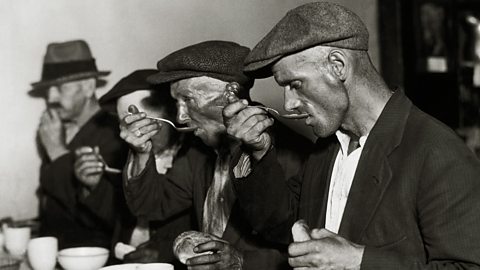Social change and popular entertainment
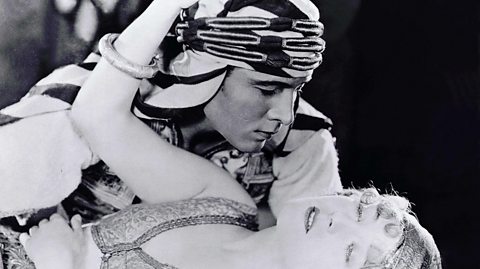
The 1920s was a period of great culturalAssociated with the way people live, eg ideas, traditions and behaviours. and social change in the USA.
This decade saw the rapid growth of popular entertainment and greater freedom for some women.
This was because:
- People wanted to try out new things to escape from the memories of World War One.
- Some Americans had more money and more time for leisure activities.
- There were technological advances.
- Young people challenged the values and lifestyles of their parents and many women were not content with their traditional role.
- Black Americans wanted their culture promoted.
- The development of the consumer societyA society where the main focus is on the purchase and use of goods and services. society altered life for many.
The changing role of women in American society
Before the war, girls were expected to behave modestly and wear long dresses.
Their relationships with men were strictly controlled and when they went out they had to be accompanied by an older or married woman.
Females were employed in jobs that were traditionally associated with women, for example servants, seamstresses, secretaries and nurses.
By the end of the 1920s, there were significant changes to the role of women, but they did not affect all women.
Voting rights for women
The biggest advance for American women was achieving the right to vote.
Organisations such as the National American Woman Suffrage Association (NAWSA) had been campaigning for decades to get the vote for women, but it was not until 1920 that the Nineteenth Amendment to the constitutionRules by which a country is organised and governed. gave women the right to vote.
This change came about because the nature of society was changing.
The contribution to the war effort during World War One also had a major impact.
Women had taken on new types of jobs, for example factory work, when they replaced the men who had gone to fight.
It was therefore difficult to refuse their demands for political equality.
Getting the vote gave women some political power in that politicians now had to pay attention to their views if they wanted to secure their votes.
For example, during the campaigns to introduce ProhibitionA name given to a period in US history between 1920-1933 when alcohol was banned. and later to end it, politicians listened to the views of women because they needed their support in elections.
By 1928, 145 women had seats in 35 State governments and two were State Governors, but these were the exceptions.
Politics was still male dominated.
The National WomanÔÇÖs Party, led by Alice Paul and Rose Winslow, tried to get an amendment An amendment is a change or addition to the US constitution. to the Constitution to guarantee equality for women in all areas of life but the Equal Rights Amendment failed to get enough support.
The increasing role of women in the workplace
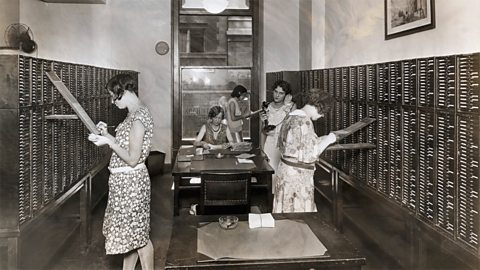
There were changes to the role of women in the workplace:
- They were employed in greater numbers and in a wider range of jobs.
- There was an increase of 25 per cent in the number of women working during the 1920s.
- By 1929, 10.6 million women were employed outside the home.
- They found jobs as telephonists, typists, secretaries and clerks.
These changes were due to:
- Their contribution during the war.
- The economic boomA period when the economy expands and grows. which created more jobs.
- Young women, especially among the middle class, wanting financial independence.
- Changes in the divorce law. The divorce rate doubled leading to more single women which increased the number of women needing work.
- Changes in attitudes in society towards the traditional role of women.
- A desire to earn money to purchase consumer goods which were being marketed towards women through advertising.
- Labour-saving devices, such as vacuum cleaners, freed up time from household chores for work outside the home.
However:
- Jobs in management continued to be male-dominated.
- Most women were still housewives and were not as free as men.
The influence of the Flappers
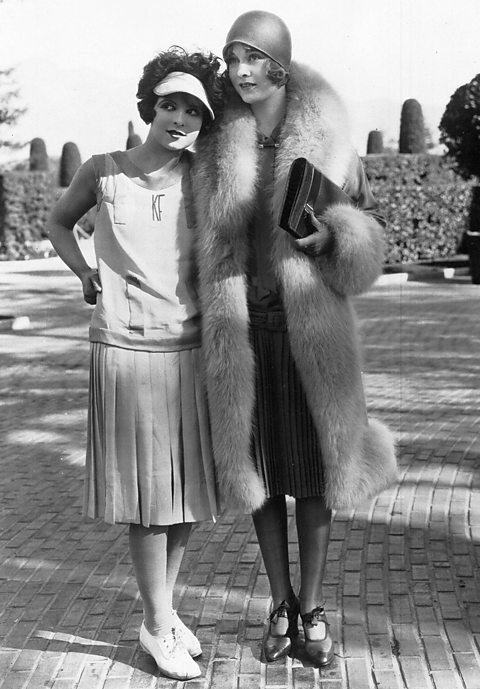
In the 1920s, a new term emerged for women who enjoyed their independence and took part in the social activities of the Jazz Age.
They were called flapperThe term used to describe a liberated, young, fashionable woman in 1920s America whose behaviour would have been considered unconventional. .
Their fashion style was characterised by the ÔÇśb┤ă▓˙ÔÇÖ haircut and lightweight waistless dresses.
Skirts became shorter.
In 1919, womenÔÇÖs skirts were about six inches above ground level, but by 1927 the hems of skirts were up to knee-level.
Cheaper fabrics such as rayonA soft artificial fabric which resembles silk. made stockings widely available.
They also wore make up which was heavily marketed to young women under 30 and went to beauty salons.
They were heavily influenced by the cinema and stars such as Clara Bow, who was known as the "It Girl".
Bow's behaviour and dress sense was imitated by millions of American women.
They would go out in public without chaperoneSomeone who accompanies a young unmarried woman in public or in the company of men. and attended speakeasyA place that sold alcoholic beverages illegally during Prohibition in the 1920s in the USA. where they drank and smoked.
They also took part in dances such as the Charleston, the Shimmy and the Bunny Hug.
They were even prepared to kiss in public.
The women who chose and could afford this lifestyle were mainly young, middle class women.
Their behaviour was viewed as shocking and even immoralWhen someone goes against what is considered to be socially and morally acceptable. by the more conservative, older generation.

Continuity in the role of women
Not all women could participate in the flapperThe term used to describe a liberated, young, fashionable woman in 1920s America whose behaviour would have been considered unconventional. lifestyle and many women actively disapproved of it.
- Working class women or those without income of their own could not afford the new fashions and they didn't have the time or the money to go out and enjoy social events.
- Women in rural areas rarely participated because the areas where they lived had less facilities. 90% of farms didnÔÇÖt even have electricity. Rural areas were also more socially conservativeNot in favour of change, cautious. than the major cities.
- Black American women could not benefit from the changing lifestyle due to discriminationTreating people differently on the basis of a particular characteristic, such as race, religion or sex. and poverty.
- Many women in the Bible Belt did not take part because they disapproved of the immoralWhen someone goes against what is considered to be socially and morally acceptable. of the flapper sensation and felt that a womanÔÇÖs role should be that of a homemaker.
- Older people disliked the boldness of the flappers.
The extent to which the lives of women changed in the USA in the 1920s
Change
- Women got the vote and influenced some campaigns, for example ProhibitionA name given to a period in US history between 1920-1933 when alcohol was banned. .
- There was a 25% increase in female employment.
- New consumer goods reduced the household chores which women were still expected to do.
- There were young, middle class women who enjoyed a carefree, independent lifestyle.
- There was a new liberal social attitude in the major cities.
No change
- Women held few political posts and did not get equality with men.
- Most women were still housewives and many jobs in business and other professions were not yet open to them. The number of female doctors and lawyers actually went down.
- The majority of women could still not afford to purchase new consumer goods.
- Poor women and those in rural areas could not afford or were prevented from participating in this lifestyle.
- Many women were conservativeNot in favour of change, cautious. and disapproved of the new flapperThe term used to describe a liberated, young, fashionable woman in 1920s America whose behaviour would have been considered unconventional. lifestyle.
Changes in popular entertainment
There were major changes in popular culture in the 1920s.
Jazz music
Jazz originated in the southern states of the USA, from the blues and ragtime music of black Americans, and emerged as part of what was termed the Harlem RenaissanceA revival of black American culture, beginning in the 1920s and centred in Harlem, New York..
It was rhythmic and lively, and it was easy to dance to.
Many of the musicians were black Americans and a number of them, such as Louis Armstrong and his ÔÇťHot FiveÔÇŁ band and Bessie Smith, The Empress of the Blues, became very famous.
Other musicians, like Fats Waller, made big profits from live performances and recordings of their music.
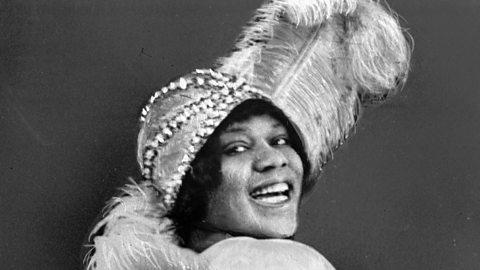
Cinema
Cinema was the most influential part of popular culture in the 1920s.
The film industry was located in Hollywood, near Los Angeles, because its dry, sunny climate was ideal for filmmaking.
During the early 1920s, every movie was silent.
Cinemas employed musicians to play the piano or electric organ during the films.
In 1927, ÔÇťtalking picturesÔÇŁ or ÔÇťtalkiesÔÇŁ began with Al Jolson in The Jazz Singer.
By marketing their movies extensively, the film industry succeeded in generating immense interest in the movie stars and their huge incomes.
Actors became massive stars.
Rudolph Valentino, an Italian, was very popular and his role in The Sheikh (1921) made him a sex symbol.
When he died suddenly in 1926, his fans were grief-stricken.
The most famous actresses of the time were Mary Pickford and Clara Bow.
Impact of cinema on peopleÔÇÖs lives
Cinema was incredibly popular.
It offered an entertaining experience and gave people a means of escape from their everyday lives.
It was a relatively cheap pastime and the movie theatres were comfortable places to watch the films.
Ticket sales went from 40 million per week in 1920 to 100 million per week in 1930.
People went several times a week.
They also influenced wider culture as people wanted to imitate the lifestyles that they saw in the movies.
The biggest stars became fashion icons and millions of women copied the look of Clara Bow, the "It girl".
Bow had a bigger influence on the emergence of the flapperThe term used to describe a liberated, young, fashionable woman in 1920s America whose behaviour would have been considered unconventional. than any other individual.
However, not everyone approved of cinemas.
Some people believed they were spreading immoralWhen someone goes against what is considered to be socially and morally acceptable. behaviour and corruptTo corrupt means to make someone or something dishonest or do things that are morally wrong. the young.
Others thought they were godless and were leading to too much consumerismThe idea that purchasing goods and services is a desirable goal for society or an individual person..
Sports
Spectator sports developed quickly, especially baseball and boxing.
Stadiums such as the Yankee Stadium were erected and Madison Square Garden was rebuilt in 1925 in order to hold sporting events, such as boxing, ice hockey and basketball.
Sports became a profitable business, attracting more and more people.
Spectator sports grew dramatically because:
- Sporting heroes, such as Babe Ruth and Jack Dempsey, attracted huge numbers of people to sport.
- The live broadcasting of events on the radio created nationwide interest. It also meant that you didnÔÇÖt have to attend a contest to show your support.
- Sponsorship by large companies helped finance expansion. Coca-Cola was the first company to sponsor the Olympic Games in 1928.
Sport was also aspirationalA hope or desire to achieve a new social status. .
It was a way for young, uneducated men from poor backgrounds to succeed.
Babe Ruth was by far the best baseball player of his time.
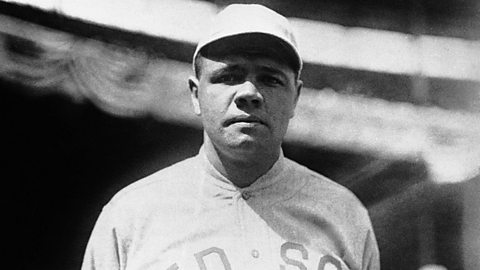
He earned over $2,000,000 during his career.
He was also responsible for changing the way baseball was played, from being a slow game to a fast game with a lot of points being scored.
1927 was a remarkable year for Babe Ruth because he succeeded in hitting 60 home runs in one season ÔÇô a record that stood until 1961.
Jack Dempsey was the heavyweight boxing champion of the world between 1919 and 1926.
He was famous for his hard-hitting and vicious style and was one of the first well-paid boxers, earning $1,000,000 for one fight.
When he was defeated by Gene Tunney in 1926 there were 120,557 people in the crowd.

Differing attitudes to social change and popular entertainment
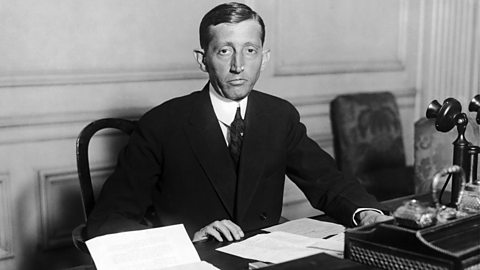
These developments were popular with a wide section of society, particularly young people.
However, for a significant amount of conservativeNot in favour of change, cautious. Americans, these changes were not just unwelcome, they were a danger to society.
Cinema was blamed for being sexually suggestive, promoting over extravagant lifestyles and glamourising violence.
The Hays Code was drawn up in 1930 to address these concerns.
It laid down strict guidelines on what was allowed in terms of male-female relations on screen.
Scenes of nudity and dancing of a sexual nature were prohibited.
A kiss could last for no more than seven metres of film.
adulteryWhen a married person has sex with someone other than their partner. was not to be portrayed in a good light, clergyPeople who conduct religious services, especially in the Christian church. were not to be ridiculed and films should condemn killings.
Jazz was also seen as a corruptTo corrupt means to make someone or something dishonest or do things that are morally wrong. influence.
It exposed young people to the illegal world of the speakeasyA place that sold alcoholic beverages illegally during Prohibition in the 1920s in the USA..
It symbolised drinking, extravagance and sexual liberation.
There were also many people who objected to its associations with black American culture.
They thought it would lead to a decline in traditional white culture.
Traditionalists also disliked the changing role of women.
They felt that women should behave modestly and adopt the role of homemaker.
They thought that independence for women would lead to a breakdown in the traditional family.
These attitudes were most prevalent among older people, those in rural areas and religious groups.

Test your knowledge
More on Life in the United States of America, 1920-33
Find out more by working through a topic
- count6 of 9
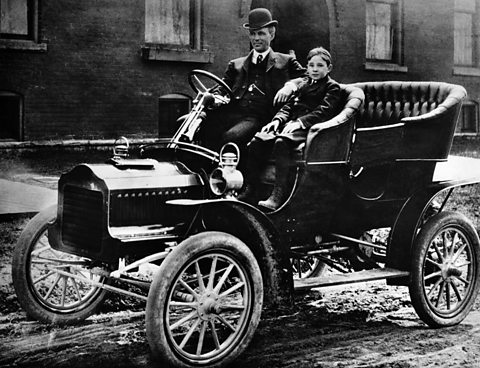
- count7 of 9
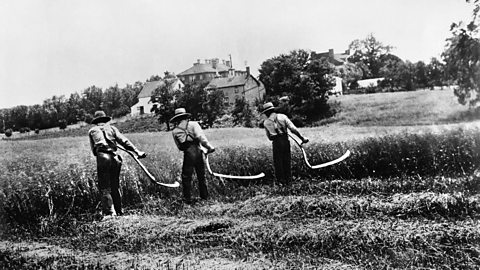
- count8 of 9
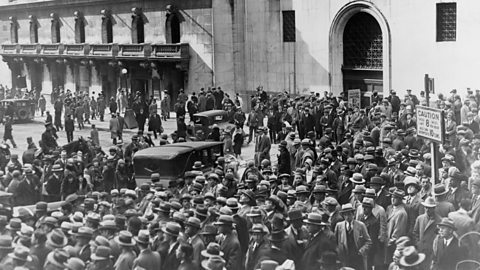
- count9 of 9
